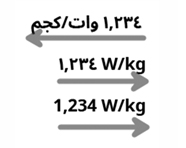In the realm of product localization, Desktop Publishing (DTP) plays a crucial role, especially for user manuals, brochures, and numerous other user documentation materials. Among the languages that present unique challenges during DTP processes, RTL (Right-to-Left) languages stand out. Drawing from decades of experience in localizing manuals for the RTL language group, Hansem Global shares insights on easily overlooked pitfalls in RTL language localization in this blog. Here, we unveil the top 5 errors that could hinder your project and provide valuable tips to navigate these challenges successfully.
Understanding Right-to-Left (RTL) Languages
RTL languages, read from right to left, include prominent ones such as Arabic, Persian (Farsi), Urdu, and Hebrew. Arabic, one of the UN’s official languages, is not only spoken in the 22 countries of the Arab League but also across North Africa, making it crucial for brand expansion in these regions.
Urdu’s inclusion among the top ten most spoken languages globally signifies the vast demographic engaging with RTL languages, highlighting their importance in tapping into economically significant markets. Failure to attentively manage the unique attributes of RTL languages can critically impact the professionalism and readability of your final documents.
The Character Systems of RTL Languages
Commonly, RTL languages are marked by their right-to-left script, lack of upper and lower case distinctions, and the presence of variant characters. For example, in Arabic, the shape of a letter can change depending on its position within a word. Despite sharing the Arabic script, languages like Arabic, Persian, and Urdu, and Hebrew using the Hebrew script, exhibit differences in character variants, punctuation, and numeral representations. This diversity underlines the necessity for a profound understanding of each language’s unique script and orthography.
| Arabic script | Hebrew script |
|---|---|
| · Used for writing Arabic, Persian, Urdu, and more. · Written right to left, with most letters connecting to adjacent ones. · No distinction between upper and lower case. · Includes variant characters that change form depending on their position within a word (e.g., beginning, middle, end, standalone). · Some punctuation marks and numerals differ from the Roman script.  | · Employed primarily for Hebrew. · Also written right to left. · Lacks upper and lower case distinction. · Features variant characters, with some changing shape at the end of words. · Some punctuation and numeral representations differ from the Roman script.  |
The Fatal Five: Top Errors in RTL Localization
Navigating RTL languages requires more than merely flipping the directionality of elements. The following sections highlight the ‘Fatal Five’ errors commonly encountered in the post-translation DTP phase of RTL language localization. These challenges necessitate sophisticated software and design systems, as inexperience can exacerbate these issues, prolonging the optimization process.
1. Font Selection
Choosing the right font is critical due to the unique character systems of RTL languages. Each character, number, and symbol in Unicode, a global encoding standard, resides within specific “blocks”, aiding in language identification. Utilizing a font that supports only the Arabic Unicode block might render Hebrew incorrectly. Ensuring the selected font encompasses the necessary Unicode blocks for Arabic or Hebrew is essential. Pre-establishing language-specific templates with appropriate fonts can streamline processes, reducing font-related errors.
| Error | Normal |
|---|---|
 |  |
2. Numerals and Language Settings
While Arabic numerals are widely used, RTL languages often incorporate native numeral systems for various reasons, including user-friendliness. Arabic and Persian, despite sharing the Arabic script, differ in numeral representation. Setting up language-specific templates that also account for numeral settings can ensure consistency across content.
| Error | Normal |
|---|---|
 |  |
3. Ligatures
Ligatures, which combine two or more characters into a single symbol, are common in languages using the Roman script for aesthetics and readability.

However, unexpected character transformations in RTL languages due to variant characters suggest a cautious approach to ligature settings. Understanding how your selected language and font handle ligatures is crucial for optimal language-specific template configuration.
| Error (wrong ligature setting) | Normal (correct ligature setting) |
|---|---|
 |  |
4. Directionality
Proper directionality in RTL languages does not imply the wholesale reversal or mirroring of content. Elements like images or icons should not be automatically flipped, maintaining their intended meaning and orientation. Employing Grep and JavaScript can dynamically adjust text directionality and identify specific text patterns for correction. Adding QA processes is vital for ensuring consistency and accuracy across documents, especially for non-text elements.
| English (LTR) | Error | Normal |
|---|---|---|
 |  |  |
 |  |  |
5. Document Binding
Correct document binding direction is fundamental for RTL language publications. Even with all elements aligned to RTL orientation, incorrect binding can disrupt the flow and readability, leading to potential printing errors. Developing automated checks to prevent printing with incorrect settings can mitigate these risks.
| Error (Binding LTR) | Normal (Binding RTL) |
|---|---|
 |  |
Conclusion: Your Partner for Global Success – Hansem Global: Mastering RTL Language Localization
Achieving a successful RTL language localization project is far from trivial. It demands an intricate understanding of linguistic characteristics and cultural nuances. With decades of experience, Hansem Global has been at the forefront of localizing content for critical RTL languages, ensuring our clients’ seamless entry into these significant markets.
We’re equipped to prevent common pitfalls in RTL language localization, guaranteeing the integrity and clarity of your documents. By avoiding the ‘Fatal Five’ errors outlined above, we position your products and services for unparalleled success in RTL-speaking regions.
Hansem Global offers comprehensive solutions to meet your localization needs. If your brand aims to penetrate RTL language markets effectively, partner with our experts. We’re ready to support your global success. For more insights and assistance with your RTL language localization needs, reach out to Hansem Global. Let’s achieve excellence together.







